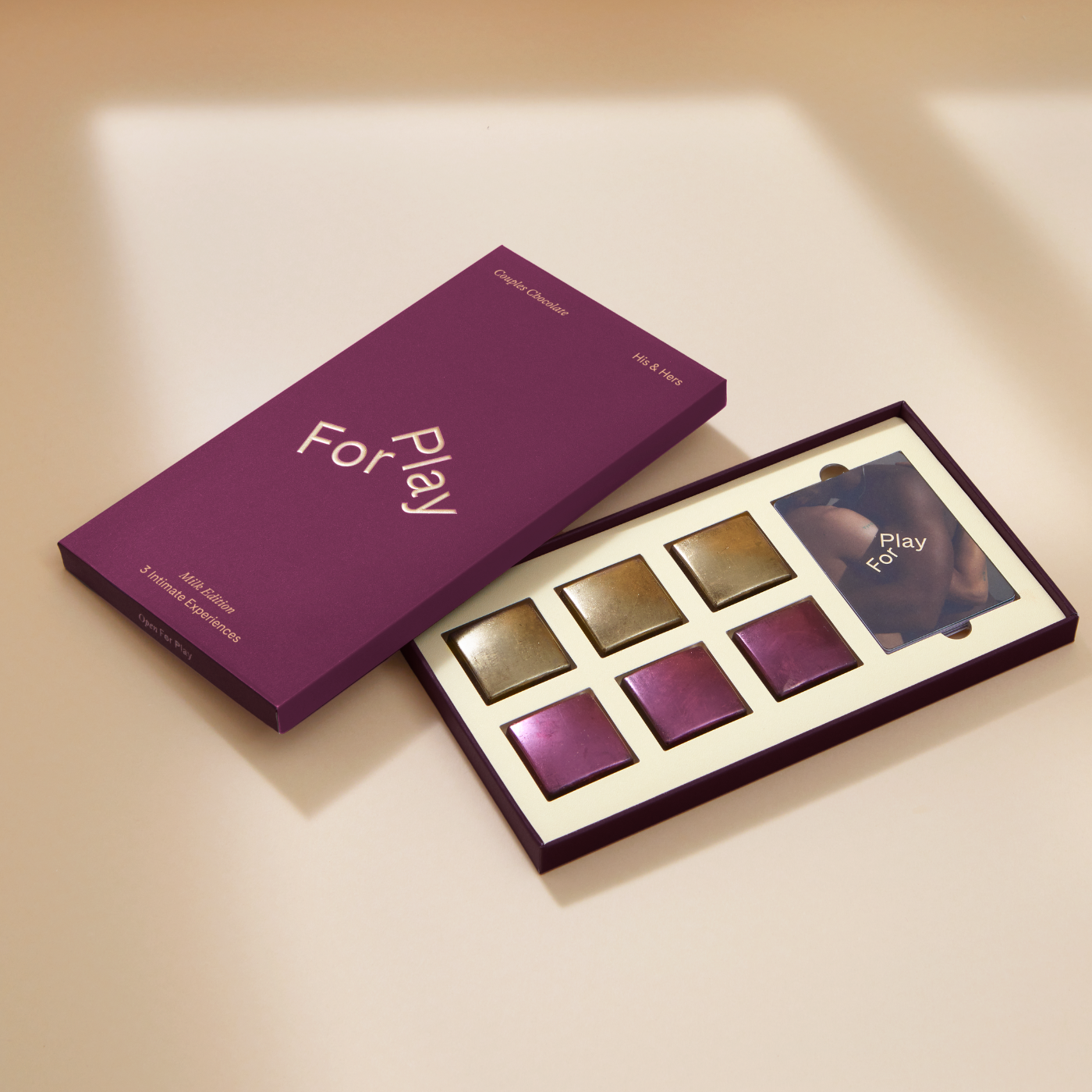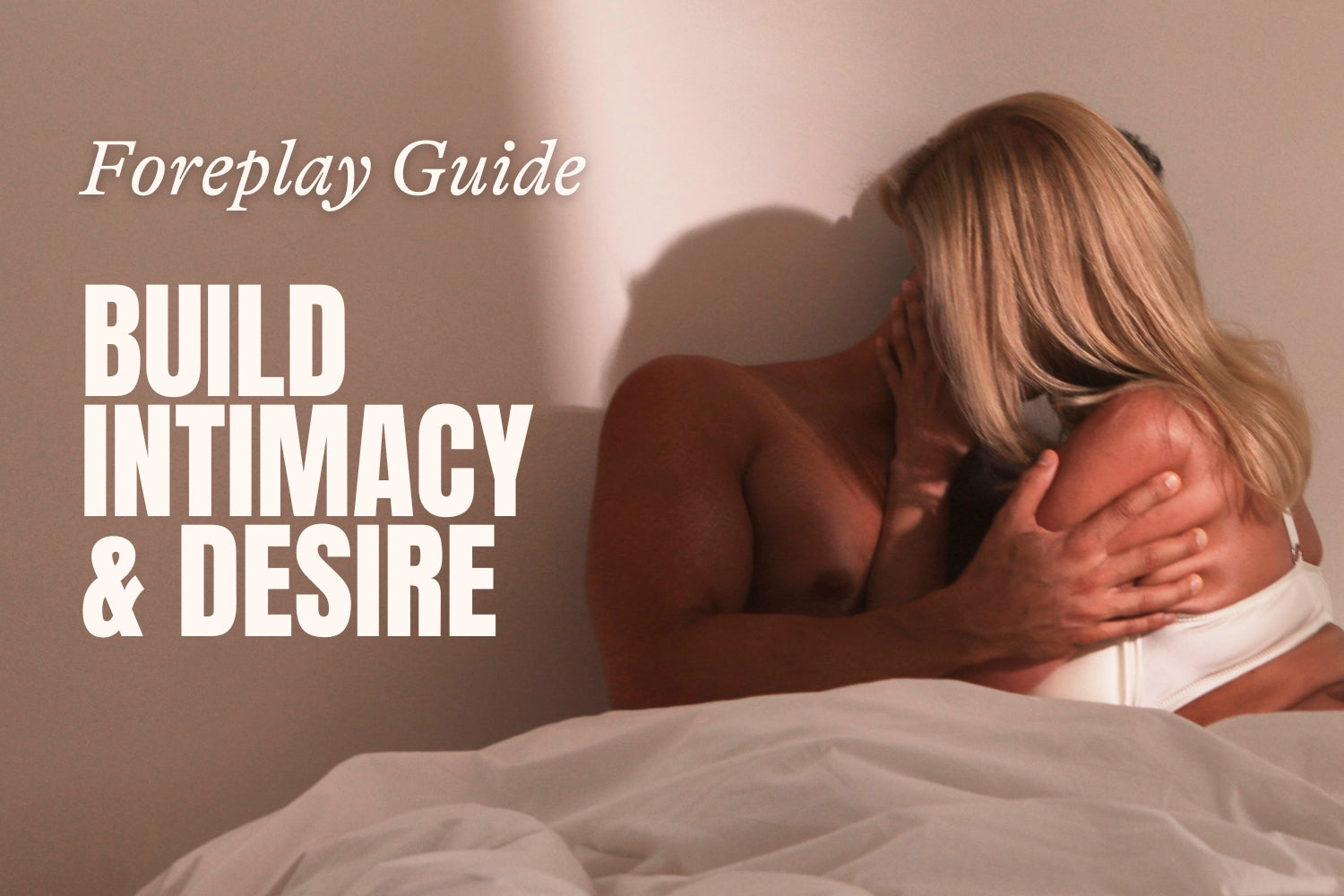We’ve all grown up with the relationships portrayed as a fairytale, where love with the one is effortless. But real relationships require intentionality, skills, effort and self growth.
For generations, movies, books, and even porn have fed us the same script - you meet “the one,” chemistry is instant, and they automatically know exactly how to fulfil your every emotional and sexual need. Desire is in perfect sync, foreplay is minimal, sex ends in a simultaneous climax and then you live happily ever after.
Sounds great. Except real love and intimacy don’t work that way. Passion isn’t autonomous, it’s about curiosity and actually understanding what turns you and your partner on is key.
So, let’s ditch the fairytale and embrace something even better: the imperfect reality of human intimacy proven by modern sex science.
1. Communication in the best lubrication
We’ve heard it before: the perfect partner just knows what you want without talking about it. Well, this is wrong and is actually holding a lot of couples back.
Not talking about sex, what turns you on, your fantasies, how things change over time, is one of the biggest reasons for less desire in relationships. Research shows that couples who openly communicate about sex are more satisfied and emotionally connected.
These conversations can feel awkward at first, and you’re not alone. 64% of men and 74% of women struggle with it, but pushing through the discomfort is so worth it.

Start on a positive note: compliment your partner, show appreciation, and create a space where sex talk feels safe. Then, try questions like, “What would make me an even better lover for you?” or “What’s something you’d love to explore together?” The more you talk, the better, and hotter, it gets.
“Communication is the best lubrication. It keeps your sex life evolving with your needs and makes intimacy more exciting.”
2. The power of responsive desire
Movies make it look easy; instant passion, clothes flying off with no effort required. But in real life, desire is more complex.
We’ve been told we should just want sex, like a built-in “sex drive” that’s always running. But that’s not how it works. There’s actually two types of desire and knowing the difference can make a big difference.
— Spontaneous desire (70% of men, 15% of women ) starts in the mind—mental desire first and then physical arousal.
You might recall this scenario vividly: you wake up in the morning and feel like having sex, even turned on, out of the blue. For spontaneous desire people, they feel turned on and then start having sex.
— Responsive desire (85% of women and 30% of men) starts in the body, you need to feel physical arousal first, and then mental desire.
Responsive desire often arises in response to certain contexts, situations or stimulation; shows up in response to stimulation: something sexy happens, and the body responds. For responsive desire people you need to start foreplay-ing and having sex to get turned on.

Almost in every coaching session and workshop people are amazed while learning about responsive desire and how it works. Responsive desire feels like “I don’t want sex, but maybe I could have it if…” or it might feel like “I don’t mind having sex but not really want it”. The key isn’t to know about responsive desire, engage in foreplay and allow the desire to grow.
3. Sex is what brings you pleasure
One of the biggest myths straight couples fall for is the idea that sex is intercourse. The reality is quite different. Only 5-15% of women orgasm from penetration alone. Most need clitoral stimulation, the right kind and enough of it, to reach orgasm. Yet, so many couples stick to the same outdated script, leaving sex feeling predictable and one-sided.

Sex isn’t just one thing. It’s anything that feels good, deepens your connection and brings pleasure to both of you. So, if you want to keep things exciting, explore different kinds of touch, experiment with foreplay, and mix things up. The more you step outside the script, the more satisfying and exciting sex becomes.
4. Mindfulness: tune in to get turned on
Mindfulness isn’t just good for reducing stress, it impacts your sex life too. Practising mindfulness improves interoception (your ability to sense what’s happening inside your body), which is directly linked to increased orgasm frequency and satisfaction in women.

When you’re fully present, you’re better able to notice sensations, respond to your partner, and savour every moment. Instead of rushing through intimacy, try grounding yourself in the experience: focus on the touch of your partner’s skin, the rhythm of your breathing, or the way your body responds to pleasure.
5. Novelty to boost your lust.
Recall the lust and passion you felt at the beginning of the relationship? New Relationship Energy is fueled by dopamine that can also be stimulated by novelty. So want more passion and lust? Have more adventurous and novel experiences. Trying new experiences, sexual or not, activates the same neural pathways associated with excitement and reward.

The Coolidge Effect is a psychological phenomenon describing how sexual interest increases or resurfaces with novelty.
Adventure doesn’t have to be extreme. It could mean exploring role-play, introducing new sensations, or even trying a shared hobby outside the bedroom. Novelty reignites the spark and helps couples break free from routines that can make intimacy feel stale. Fresh experiences aren’t just fun: they’re fuel for lasting desire.
6. The power of anticipation
Desire isn’t just about the act, but also the build-up. Anticipation activates the brain’s reward system, boosting arousal even before anything physical happens. Engaging with fantasies, sending flirty messages, or teasing your partner throughout the day creates a sense of longing that can deepen your connection.

Planning intimacy allows both partners to mentally and emotionally prepare, heightening excitement and connection. We like to call it “sex o’clock.” By carving out time for each other, you create space to explore, connect, and keep the spark alive.
7. Emotional buffering against stress
Stress can kill your desire, but the way your partner responds, or how supported and understood you feel (perceived partner responsiveness), makes all the difference.

When you feel heard, validated, and emotionally connected, stress feels lighter and stops blocking intimacy. Small acts like holding hands, checking in, offering a kind word can lower stress and increase desire.
Research shows that couples who feel emotionally supported maintain stronger intimacy, even on high-stress days. So if life feels overwhelming, don’t shut down, lean into connection and desire will follow.
8. Foreplay is the route to pleasure
Foreplay is key to deeper intimacy. Couples who spend more time on foreplay feel more connected, both emotionally and physically, making the experience more satisfying.
Studies show that at least 15 minutes of foreplay, whether through kissing, touching, or communication, helps partners feel closer and more attuned to each other. And when it comes to pleasure, longer foreplay (15-25 minutes) significantly increases the chances of orgasm for women.
9. Never forget aftercare

Aftercare plays a vital role in promoting intimacy and satisfaction.
Studies reveal that couples who prioritise aftercare consistently report higher levels of sexual and relationship satisfaction. These small acts of connection help partners feel appreciated, cared for, and emotionally close, strengthening the bond between them. It is one more evidence of how emotional intimacy impacts positively physical intimacy.
Whether lying together quietly, sharing a laugh, or simply saying, “I loved that,” aftercare is a beautiful way to extend intimacy beyond the physical.
10. We are unique
No two bodies are the same and what feels good can change over time. Research using fMRI scans has shown that erogenous zones are highly individualised, meaning one person’s sweet spot might not work for another, and that’s okay.

Couples can explore this individuality through body mapping exercises, experimenting with touch, temperature and vibration to discover unexpected zones of pleasure. These playful moments help keep things fresh and exciting.
Real intimacy isn’t about waiting for passion to strike like lightning, it’s about creating the conditions for desire to grow, over and over again. So, let’s move beyond the script we’ve been handed and step into something even more exciting: an intimate life that evolves and deepens. Because the best relationships aren’t the ones that just happen, they’re the ones we create.
Behind the Words

Victoria Rusnac
Founder of For Play & Intimacy Coach










